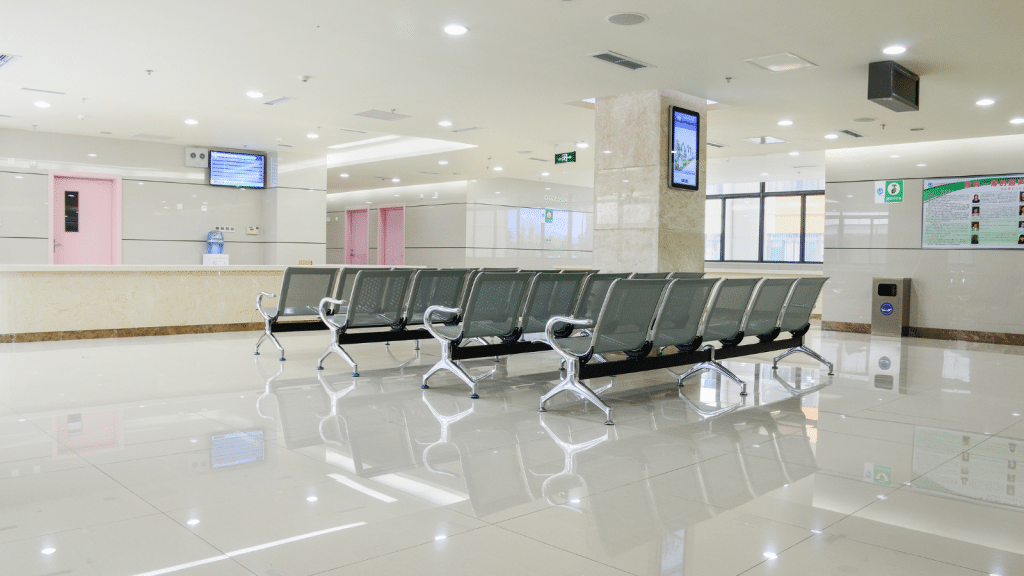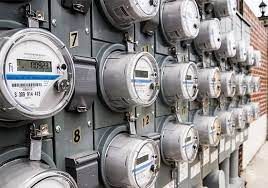For hospital operators and administrators, balancing operational costs and ensuring the well-being of their staff and patients can be a challenge. However, hospitals shouldn’t ignore sustainability as a smart cost reduction strategy as there are certain ECMs that help enhance well-being, as well as drive operational cost savings. For instance: Hospital LED lighting and control systems are examples of a sustainability initiatives that will lead to lower energy costs, maintenance costs, and visual comfort for both patients and hospital.
Light impacts the body’s circadian system which affects a person’s perception, mood, and even energy levels. Proper lighting is essential in any facility, but arguably more so in hospitals, given their focus on health and safety, and well-being of its occupants – principally patients and medical staff.
Did you know: Hospital LED lighting has been proven to help decrease agitation in patients suffering from dementia? Not only that, but Healthcare staff also benefit from suitable lighting systems as it boosts their mood while working. Both patients and hospital workers stand to benefit from proper lighting systems.
Aside from staff health and patient well-being, energy-efficient lighting can help reduce energy costs and carbon emissions in hospitals. Hospitals are heavy consumers of electricity as they need the power to run critical life-saving equipment and bright lights virtually 24/7. Lighting is often the most overlooked aspect of a facility yet its one of the most important.
Hospital LED lighting provides an ideal opportunity for the healthcare sector to realise its sustainability goals while reducing operational costs. Below are some points on how simple lighting upgrades can help promote good health and drive operational cost savings.
Benefits of upgrading hospital lighting to LEDs
Reduced Flicker-related Headaches
Unknown to many, flickering lights can trigger headaches or ocular migraine attacks. This is due to flickers which occur when AC power passes through power lines at 120 times a second. It affects a lightbulb’s output which results in flickering.
Flickering lights are visual triggers which accounts for most migraine attacks, visual hypersensitivity for patients on the autism spectrum, and with photosensitive epilepsy. Traumatic head injury patients are highly sensitive to light and flickers can trigger severe headaches for them.
Older fluorescent lighting systems using magnetic ballasts were known to trigger epileptic seizures and eyestrain. Modern LED lighting systems are designed with better drivers to mitigate flickering caused by power fluctuations and the like. A 5% flicker is acceptable to reduce flicker-related headaches or seizures, according to the IEEE.
Mimicking Natural Sunlight with LED Lights
- Compared to fluorescent lights, an LED light’s output mimics the natural output of sunlight.
- LED light output has less blue light and more white light, which helps the brain decrease melatonin production during waking hours.
- Both patients and hospital staff feel more energised and awake, thanks to LEDs.
- Since LED lights mimic natural sunlight, patient safety isn’t compromised.
- Hospital staff can easily identify medical equipment or medicines based on their colour.
- Doctors and surgeons have an easier time examining their patients or performing life-saving surgeries on their patients.
- Patients also benefit as a bright environment offers them utmost comfort and safety.
- Some healthcare LED lighting systems are also dimmable to achieve a circadian-friendly environment for patients.
- They can be programmed in cycles to provide white light during waking hours and minimal light as patients take their rest.
- These lights’ colour temperatures help promote a healthier sleep/wake cycle for both patients and their healthcare providers.
Increased Colour-Rendering Indexes and Healthcare Staff Performance
As mentioned earlier, LED lights’ white light provide crucial white light to increase the healthcare facility’s staff performance. However, seeing colours in their true colours is highly crucial in any hospital environment. LED lights designed for healthcare facilities have increased Colour-Rendering Indexes or CRI. CRIs are measured by a light source’s colour accuracy or how it can render the true colours of objects, environment, animals, or people.
Light sources, like LED lights in hospitals, have CRI ratings between 70 – 100, while fluorescent lights have CRI ratings lower than 70. Anything below 70 is unacceptable for hospitals settings as colour inaccuracy may lead to misdiagnosis and possible patient fatalities.
Colour accuracy is important for healthcare staff performance. High CRI-rated lighting systems help care providers treat their patients’ ailments accurately. Re-admissions, liability claims, and medications errors are minimised by acceptable CRIs.
Offers Better Performance and Longer Operating Life Span
LED luminaires are designed to operate longer and better, compared to their incandescent and compact fluorescent (CFL) counterparts. Most crucially, LEDs are able to generate similar or greater illuminance output (LUX level) yet require on average 50% less electricity than older lighting systems. This means that the cost of ‘keeping the lights on’ would be virtually halved.
Not only does LED provide cost savings and better performance, but they also last longer as well, meaning the maintenance and replacement costs are also lower in the long term.
As in any commercial office building or manufacturing site, downtime costs money and productivity, however operational downtime in hospitals as a result of burnt out or flickering light bulbs could literally mean life or death.
LED lights ensure that operation downtimes are minimised or eliminated inside the hospital. Additionally, since LEDs emit less heat, it helps the HVAC system cool areas faster and efficiently.
Integration with Building Management Systems for Interoperability
Another benefit is the interoperability and integration of LED lighting systems with Building Management Systems and Energy Management Systems which allows hospital engineers among many other things, to monitor, analyse, and track real-time data for maintenance purposes. By applying smart algorithms and rules, its possible to track lighting usage by ward or section and map actual usage against lifespan of LED luminaires to predict when maintenance call-outs are required. This would minimise downtime and ensure maintenance schedules are streamlined. It makes it easier to predict possible equipment failure – in this case, the hospital’s lighting system – and find solutions for it.
However, localised control should also be considered, especially for areas where dynamic or manual control is still required: surgical rooms and intensive care units for patients who need critical care. Automated controls, via BMS, and localised control can still work together to address the needs of specific areas within the hospital.
In conclusion, hospital LED lighting can help hospital operators not only reduce energy costs and help achieve sustainability targets but it will also improve the indoor environment quality which has far-reaching benefits to healthcare providers and patients.
As one of Australia’s largest ESCOs, Ecosave has helped both large and small hospitals with design and implementation of LED lighting systems in addition to many other types of energy conservation measures designed to reduce costs, emissions and improve health and well being of patients and staff.
To learn more about our extensive experience and how we can help you achieve your sustainability targets, Click here to book a free phone appointment or call us on 1300 55 77 64 today!





